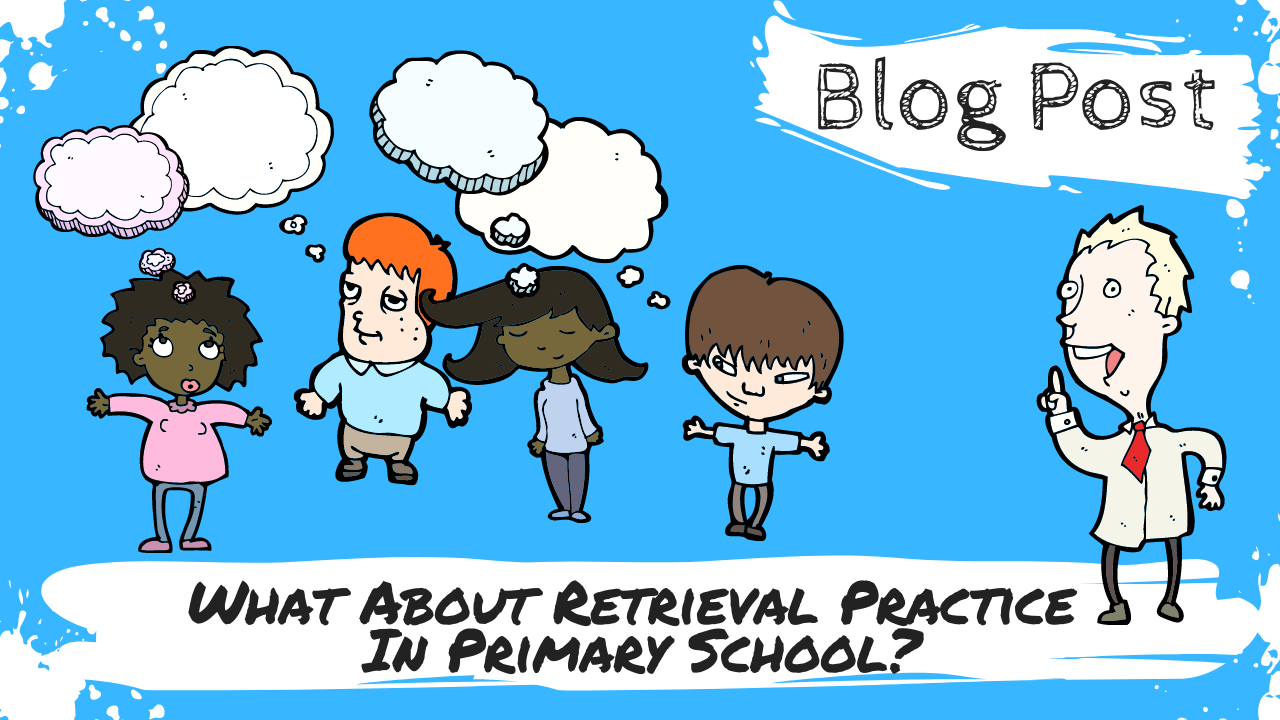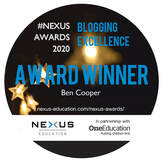|
One of the best things to come out of spending more time at home has been the opportunity to do more reading. One of the best things about returning to school has been the chance of using that reading in the classroom and working alongside teachers to see its impact! The Science of Learning course by Evidence Based Education has been my highlight of the past few months. Within this course and plastered across most educational articles at the moment is Retrieval Practice. Why? It is simple, easy to understand and not too far away from what good teachers have been doing all along. But does it work in Primary? My only gripe is that a lot of research out there tends to be focused on older students learning in Secondary and University with little time spent looking at effective retrieval in Primary or the Early Years. Nevertheless, Retrieval Practice research is still very comprehensive and conclusive. It works! It remains relevant at all ages which is one of the reasons why The Science of Learning is such a great hook to place your education cap on – it never changes! And so we come to the second question, what might Retrieval Practice look like in a Primary classroom and how can it be used most effectively? Retrieval Practice?! Say what?! So, what is Retrieval Practice? Retrieval is covering the days of the week on your display and asking them to write today’s date. Using memory is taking the vocabulary prompt sheet away halfway through the lesson so students don’t become reliant on it. Retrieval Practice is also providing students with another chance to complete calculation questions two weeks after you taught the method. One of the best ways to promote long-lasting learning is to have students retrieve key concepts from memory. They key word from this opening sentence is ‘Memory’. Asking students to use their memory to answer and recall prior learning. Activities promoting the use of memory has been proven to be the most effective way of creating long lasting knowledge. When you first drove to work, you may have needed directions to help you. After time and practice you now are ‘fluent’ in driving to work because at some point you stopped using the directions and used your memory instead. Retrieval also forces children to make connections to previous lessons and contexts and asks them to apply it. In other words, now that you know how to drive to work, you also know how to drive to the supermarket that is located 1 kilometre down the road from work too! One misconception is that retrieval practice is just a fancy word for testing and assessment. And you would be partially right in saying that, except that Retrieval Practice, like the examples above, can be weaved into day-to-day lessons as engaging activities and simple clever strategies too. It should play a major part of lessons so that learning is built upon, connections to prior learning are made and lessons don’t just move onto the next tick box objective. Retrieval allows the brain to practice finding the information. Adapting Retrieval for Younger Students  We have all been there at the beginning of our second lesson of a maths concept. We ask the students to complete a question from the previous lesson. A question that, moments before, you believed 90% of the students would recall because it is exactly what you taught them just 24 hours ago. Except you discover, moments later, that you are faced with 27 blank, puzzled faces. Adaptation is, like with most strategies, important for retrieval to be successful for our little ones. When those blank faces occur, it is often because they were unable to make a connection to any of the previously learned information. They can’t find it in their brain! Retrieval allows the brain to practice finding the information. We know how to drive to work from our home but would struggle to get there if we started from an unfamiliar location. Our own and children’s brains sometimes need a little familiarity to get them going. Retrieval for younger students is most successful when instead of setting open ended retrieval challenges, the process is broken down to begin with. Instead of asking the students to complete a full column addition method for retrieval, begin completing the question yourself and then ask the students what the next step is. Likewise, instead of asking students to recall everything they can remember about a shark, ask them to recall what a shark eats, where it lives and what are the main physical features. Prompts and scaffolds will make connections with previous learning and support effective retrieval practice. Desirable Difficulties  We want retrieval activities to be effortful. That classic pub quiz moment when you know you know the answer. It is hidden in your brain somewhere – you know it! Where did you see the answer last? Where did you first learn that information? It can sometimes take you 10 minutes of thinking hard! Then – BINGO! The answer slips into your working memory before it is quickly jotted down on your answer sheet moments before the quiz master collects your it in! Few! Retrieval is most effective when students have to struggle to remember the information, but they are still able to do so. Students learn less when the retrieval is very easy or very difficult. The key is to aim for the “sweet spot” when retrieval is challenging, but successful. Make sure retrieval is based upon things they previously have been able to do. However, retrieval practice can also be made too easy. Multiple studies have shown that children benefit more from retrieval practice when it occurs after they have forgotten some of the information. Asking the students to recall their learning one day or one week after the lesson will be more effective than having them recall it immediately after learning the information. 5 Simple Retrieval Strategies1) Remove the Support – Scaffolds and prompt sheets are great to allow students to learn information for the first time. But make sure you challenge your students to try working without it either in the same or following lesson.
2) Picture Prompt – Display a number of images or symbols on the board that link directly to prior learning in a story, history or geography lesson. Ask the students to use the images or symbols to recall as much as they can about what they have learned previously. 3) Fast Facts – Ask each child to write a fact down from a previous lesson at the top of a piece of paper. Students can then swap and add a different fact. This can be repeated four or five times slowly asking students to recall more of their prior learning. Students seeing other people’s facts also acts as a prompt to support the retrieval process. 4) Read the Retrieve – Once information has been shared, it is very easy to share the same information in the next lesson as a reminder. Research shows that once information has been shared in the form of text, spoken word or videos etc., remind the students of the information through a small quiz instead. They are far more likely to remember it! 5) Simple Call and Response – This is definitely not anything revolutionary. Fire out questions and ask students to write the answer down on a whiteboard. As long as you are asking all students to recall the answer or information independently from memory before sharing then you are promoting retrieval. Try also our Connect 4 retrieval game template!
0 Comments
Leave a Reply. |
SearchWith a keen interest in the neuroscience and psychology of learning, WAGOLL Teaching is about sharing research alongside great, simple teaching ideas to a global teaching community.
Ben has been in education for over 10 years and is passionate about simplifying high quality teaching and learning through innovative and practical approaches in the classroom. sUBSCRIBE |
|
Who are we? |
With a keen interest in the neuroscience and psychology of learning, WAGOLL Teaching is about sharing research alongside great, simple teaching ideas to a global teaching community.
|
All copyright reserved ©.
I would like to remind all visitors to this website that all pages on this site are copyright protected, unless stated. Most importantly, this site is for the use and enjoyment of all children, parents, guardians, carers and teachers who are involved in WAGOLL Teaching. Please use the resources/ideas as you need without replicating them for your own gains.
I would like to remind all visitors to this website that all pages on this site are copyright protected, unless stated. Most importantly, this site is for the use and enjoyment of all children, parents, guardians, carers and teachers who are involved in WAGOLL Teaching. Please use the resources/ideas as you need without replicating them for your own gains.









 RSS Feed
RSS Feed


